Traveler's
USA
Notebook
Theater
Reviews
All In The Timing, The Mark of Zorro
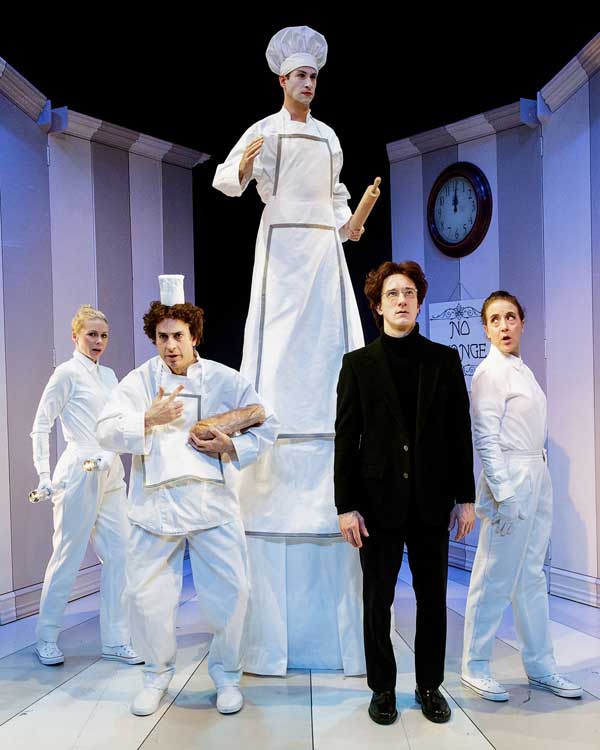
In the timing-is-everything category, don't miss
All in the Timing, David Ives' clever homage to wordplay,
now at 59E59. Primary Stages has wisely celebrated his six one-act
comedies with a 20th anniversary production.
Ives, who wrote the provocative hits Venus in Fur and New Jerusalem, is a gifted craftsman with an ear for language and its musicality. Add the inspired direction of John Rando and an amazingly versatile cast - Carson Elrod, Jenn Harris, Liv Rooth, Matthew Saldivar - and All in the Timing approaches theatrical perfection.
Each actor takes on various roles with dexterity; Elrod is noteworthy for his ease with physical comedy, but all are excellent. The reason? The stylized comedies are hugely entertaining and wicked smart. Sure Thing posits a man and woman, strangers in a café. They talk and each time they say the wrong thing, a bell goes off -- and they start anew. It takes time until they get the wording and the rhythm just right.
Words, Words, Words is a spoof on the theory that if you give monkeys a typewriter, they'll eventually produce Hamlet. Three apes, aptly named Milton, Swift and Kafka, turn the tables on their lab master, ranting, often in Shakespearean couplets, about everything from exploited workers to literary achievement. "kkkkkkkkk, I worry I'm repeating myself," muses Kafka.
Such lines are a perfect intro to Philip Glass Buys a Loaf of Bread, a pitch-perfect parody of Philip Glass' operas. Short, repetitive phrases spoken in a bakery, with an ingenious bit of physical parody, makes this a particular standout. It's all about the timing, and the verbal replays create a music and hilarity all its own.
So does The Universal Language, which is a fun exercise in gibberish. An instructor attempts to teach a shy stutterer a new international language: Unamunda.
As he strings together disparate words and sounds, they produce a kind of wacky logic all their own. And as his student catches his fanciful drift, a sweet engagement ensues.
This is Ives' forte - the beauty of language, which underscores our extraordinary need for communication and connection. All in the Timing is a salute to the poetry of meaning and the joy of farce. Accompanied by Beowulf Boritt's colorfully skewed set and Jason Lyons lighting, it works like a charm.
The Mark of Zorro at the New Victory Theater has its own brand of memorable theater. Scottish company Visible Fictions has turned the classic swashbuckling adventure into a fun lesson for children about justice and heroism. Based on Johnston McCulley's 1919 short story The Curse of Capistrano, it's better known, after many film and TV adaptions, under the Zorro title.
In this incarnation, the troupe's tale of a masked avenger in 1809 Spanish-ruled California is delivered via simple, but inventive aesthetics. If actors need a horse, they hold a cardboard drawing of a horse's head and trot off.
Written by Davey Anderson, the story revolves around young Diego de la Vega, who witnesses the murder of his father. Despite tragedy, he adheres to his wise teaching: "Don't fight for vengeance. Fight only for justice."
Time passes and now Esteban, a powerful captain, allows his soldiers to rob the peasants. Enraged by this injustice, Diego dons a black mask and avenges all wrongdoing. In his wake, he leaves a single Z, the mark of Zorro! He not only helps the tormented, but he attracts the attentions of highborn Isabella. Equally outspoken; she's as verbally feisty as Zorro is saber savvy.
Zippy direction from Douglas Irvine, music by David Trouton and Robin Peoples' endearing designs serve the saga well. Three talented actors, Tim Settle, Denise Hoey and Neil Thomas, skillfully play myriad roles, evoking the theatricality of an Old West road show. Zorro lives "to outsmart the bullies and the villains and the cheats." Let's hope the young audiences take his message to heart. —Fern Siegel
Photo: All in the Timing/James Leynse
The Mystery of Edwin Drood, Circus Oz
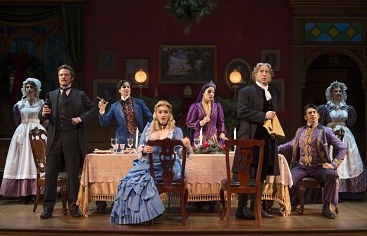 Charles
Dickens died in 1870, midway through his last novel, and its
unfinished ending has been a creative lure to stage and screen ever
since. The current Broadway revival of The Mystery of Edwin
Drood at Studio 54 is a worthy addition to the canon. A
fun, tongue-in-cheek musical comedy, the Roundabout Company's
version combines an interactive theatrical experience with a
top-notch production.
Charles
Dickens died in 1870, midway through his last novel, and its
unfinished ending has been a creative lure to stage and screen ever
since. The current Broadway revival of The Mystery of Edwin
Drood at Studio 54 is a worthy addition to the canon. A
fun, tongue-in-cheek musical comedy, the Roundabout Company's
version combines an interactive theatrical experience with a
top-notch production.
Set in a Victorian music hall, the show within a show is overseen by Mr. Cartwright (an excellent Jim Norton). The acting troupe, which specializes in broad innuendo and gleeful mugging for the audience, is performing The Mystery of Edwin Drood.
The plot focuses on choirmaster John Jasper (a super Will Chase) and his nephew Edwin Drood (Stephanie J. Block). Jasper lusts after Rosa Bud (Betsy Wolfe), Drood's fiancé. Jasper, no stranger to the opium den of Princess Puffer (Chita Rivera), isn't the only one smitten with Rosa.
So is hot-tempered Neville Landless (Andy Karl)
from Ceylon, who, with his twin sister Helena (a standout Jesse
Mueller), is mentored by Rev. Crisparkle (Gregg Edelman). But Drood
and Landless hate each other — and when Drood disappears on a dark
and stormy night, Landless is accused of his murder.
Of course, it's tough to prove murder without a body. So the role of
murderer is left to the audience —which happily picks a different
one each night. Tony-winner Rupert Holmes, who wrote the book, music
and lyrics for the 1985 show, has been well served by this crisply
paced revival.
Both the set design by Anna Louizos and costumes by William Ivey Long are beautiful, complemented by perfect lighting and choreography. The sheer exuberance of the first-rate cast, led by Chase and Norton, is a plus; all are at the top of their game. Block is terrific in multiple roles; even smaller roles like the drunken Durdles (Robert Creighton) are a delight.
The show is "suggested by the unfinished novel," but all the Dickens' hallmarks — dark secrets, dual identities, narrative twists — are here. Its spot-on score is augmented by Holmes' cleverness: He's written a scenario, however unlikely, for every credible character. His inventiveness, coupled with Scott Ellis' smart, lively direction, makes Drood a winner.
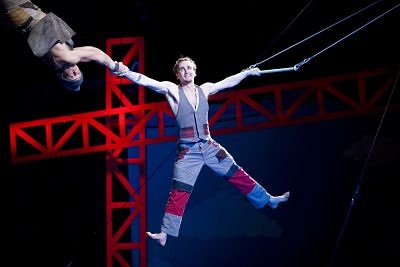 So
is Australia's answer to hipster circus. Trapeze artists, jugglers
and musicians that double as acrobats keep the comedy and the
excitement fast and furious. Circus Oz, From the
Group Up, now at New York's New Victory Theater through December 30,
is recommended for ages five and up, but it will make every member
of the family stand up and cheer.
So
is Australia's answer to hipster circus. Trapeze artists, jugglers
and musicians that double as acrobats keep the comedy and the
excitement fast and furious. Circus Oz, From the
Group Up, now at New York's New Victory Theater through December 30,
is recommended for ages five and up, but it will make every member
of the family stand up and cheer.
That's thanks to clever theatrics; the eclectic cast is skillful —
using ladders and rings, skateboards and instruments in novel and
inventive ways. The high-energy Australian troupe defies logic —
with a skyscraper-style act loaded with irreverent in-your-face-fun.
It is all accompanied by music director Carl Polke's jazzy, techno score that rocks the house. Director Mike Finch has produced an eclectic marriage — traditional circus meets rock 'n' roll — aided by 14 multi-talented circus performers that combine hilarity and irreverence with amazing feats.
Finch says Circus Oz likes "formality to be
subverted, mocked and sent up" — and he's gotten his wish. This
artistic anarchy is carefully timed and beautifully orchestrated. —Fern
Siegel
Edwin Drood photo: Joan Marcus
Circus Oz photo: Rob Blackburn
Detroit

There is big trouble in America — a slow-growing economy, worries about jobs and the imploded housing market. And while there are signs of optimism, some cities have been decimated by the country’s shift from a manufacturing powerhouse. Nowhere is that more evident than Detroit.
So it is strangely fitting that Lisa D’Amour’s new work is named Detroit. While there is no reference to the city’s extraordinary woes, the Motor City doubles as the most graphic decay of the American dream.
In her darkly entertaining play at Playwrights Horizons, D’Amour has moved into the city’s suburbs to make her point: The middle class is in freefall and its once proud neighborhoods are spiraling out of control.
She paints a sad portrait in a tight drama about two couples. Mary (Amy Ryan), a paralegal, and Ben (David Schwimmer), a loan officer, have invited the new neighbors over for a barbecue. They are hosting Sharon (Sarah Sokolovic) and Kenny (Darren Pettie), who scream trouble. Underemployed and newly sober, there is an air of menace and uncertainty to the neighbors. At the same time, Sharon waxes rhapsodic about the past, when neighbors stuck together and formed a community.
But community, like the economy, isn’t what it
used to be.
D’Amour drives that theme home via address: The couples live in
Bright Houses, model homes built in the prosperous 1960s.
Ironically, they live on Sunshine Street. They are, however,
enveloped in hopelessness and fear.
The generational shift from tight-knit suburban neighbors to wailing remnants — the once-happy middle class and the nasty underclass — is eulogized in the final scene by the man (John Cullum) who owns Sharon’s house. He, too, reminisces about the past; it’s the one politicians are fond of extolling, though they usually omit the main reason for its demise: shipping jobs and industries abroad.
Detroit doesn’t point fingers; it’s a
moving exposition not an indictment. Its able ensemble expertly
illustrates those caught in the existential angst of dreams
deferred. —Debra Griboff
Photo by: Jeremy Daniel
Forbidden Broadway
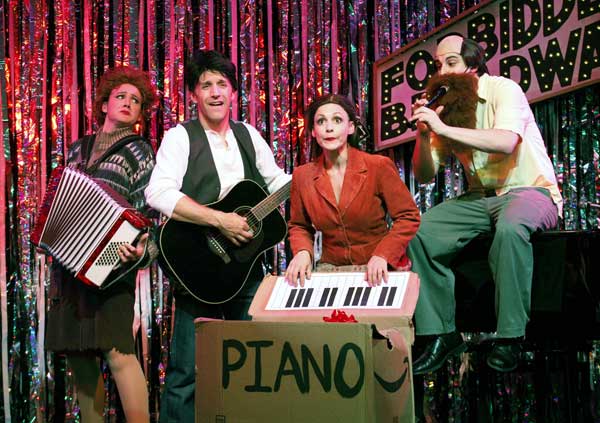
Where would Broadway be without Forbidden
Broadway?
The brainchild of award-winning Gerald Alessandrini, the acid-laced,
hysterically funny spoof is back. Currently at the 47th Street
Theater, Forbidden Broadway – Alive and Kicking is a wild and crazy
send-up of Broadway musicals. It manages to be both a valentine to
the theater and an affectionate swipe at its wackier aspects.
Since 1982, Forbidden Broadway has been a much-anticipated staple. Three years ago, Alessandrini called it quits. To the delight of New York theatergoers, he changed his mind and unleashed his satire.
This incarnation, he lampoons 20 productions — from Into the Woods to Newsies, Porgy and Bess to Spider-Man. His versatile cast — Natalie Charlé Ellis, Jenny Lee Stern, Scott Richard Foster and Marcus Stevens — deftly express his genius.
Be it the cloddish Matthew Broderick in Nice Work If You Can Get It, the nonmusical musical Once or the over-the-top glee in Newsies, Alessandrini never misses. He lampoons the smile-crazed Ricky Martin in Evita and Catherine Zeta-Jones’ paltry musical chops in A Little Night Music with laser-like precision.
Of course, that’s his specialty, finding the quirkier aspects of performances — then exploiting their deeply humorous side.
Even if you haven’t actually seen the shows,
you’ll get the jokes, alongside his commentary on the state of
musical theater, delivered with wit and panache. Forbidden
Broadway – Alive and Kicking is cause for celebration.
—Debra Griboff
Photo: Carol Rosegg
Pulp Shakespeare
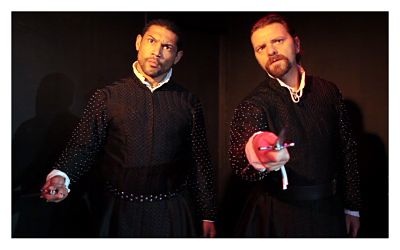 Shakespeare’s
plays are frequently staged in contemporary dress to bridge the gap
for modern audiences. Pulp Shakespeare keeps period garb
and enlists his distinct style of language to cleverly restage
Quentin Tarantino’s Pulp Fiction.
Shakespeare’s
plays are frequently staged in contemporary dress to bridge the gap
for modern audiences. Pulp Shakespeare keeps period garb
and enlists his distinct style of language to cleverly restage
Quentin Tarantino’s Pulp Fiction.
Now at the Cherry Lane Theater, the show, part of the NYC Fringe Festival, calls on two murderers, a boxer, a brutal lord and his alluring wife to tell the convoluted tales of betrayal and redemption.
Her Majesty’s Secret Players utilize blank verse and prose, throwing in a few of the Bard’s famous lines en route, to show similarities in tone and plot line to the Oscar-winning screenplay.
Both Tarantino and Shakespeare, per the play’s director, have a “fondness for incorporating violence and sexual tension into their stories.” It’s entertaining, but if audiences aren’t devotees of the film, the production’s dark humor may elude them.
Pulp Shakespeare recreates the film’s set pieces — the diner dancing, pocket watch story and resuscitation scene — with flair. The touted discussions, such as the sexual overtones of massaging a woman’s foot, work beautifully in the metaphor-rich language of the Elizabethan stage.
Aaron Lyons as Vincent de la Vega and Dan White as Julius are nicely paired; the cast in general, Mia (Hannah Beck), Butch (Christian Levatino), Roger/Zed (David Lautman), Marcellus (Nathan Freeman), clicked.
Issues of divine intervention, revenge and
loyalty are approached with both menace and black humor intact.
Pulp Fiction fans will love it. —Fern Siegel
Bring It On: The Musical
.jpg) The
latest movie turned Broadway show, Bring It On: The
Musical is a high-energy production that turns
cheerleading — and all its bitchy, backstabbing elements — into a
winning-isn't-everything life lesson.
The
latest movie turned Broadway show, Bring It On: The
Musical is a high-energy production that turns
cheerleading — and all its bitchy, backstabbing elements — into a
winning-isn't-everything life lesson.
Now at the St. James Theater, Bring It On, loosely based on the 2000 teen comedy, has a good-natured sassiness, thanks to Jeff Whitty's script and director/choreographer Andy Blankenbuehler's impressive dance routines. The last Broadway show to take on high-school rivalries, Lysistrata Jones, was sharper in its parody; Bring It On is all about fierce face, pumping high-octane gymnastics into its melodious numbers, set to a hip hop meets top 40 score.
The focus is lily-white Campbell (Taylor Louderman) of Truman High, obsessed with prepping for the upcoming varsity finals. When redistricting sends Campbell to Jackson High, a tough, inner-city school without cheerleaders, she meets Danielle (Adrienne Warren), whose crew dance only for themselves.
The multicultural clashes — and Campbell's drive to reclaim her status — begin in earnest when she discovers that scheming Eva (Elle McLemore), her former friend, has done her wrong. Now it's Jackson versus Truman, and all bets are off.
Cheerleaders, their rivalries and inevitable clichés, get old fast. What saves Bring It On are the soaring musical numbers accompanied by feel-good friendships, strong leads in Louderman and Warren, and a kick-ass supporting cast: Gregory Haney as La Cienega, a transgendered member of Danielle's dance crew, and Bridget, the nobody at Truman (Ryann Redmond) who finds her self-esteem and voice at Jackson.
Cheerleading may seem an odd focus for
Tony-winning composers Tom Kitt (Next To Normal) and
Lin-Manuel Miranda (In The Heights) who co-wrote the music,
with Amanda Green and Miranda on lyrics, but there is charm in
message lite, especially when it meets taut athleticism. Designed to
tour, Bring It On:
The Musical speaks to high-school kids everywhere. —Fern
Siegel
Photo by: Joan Marcus
|
|
|
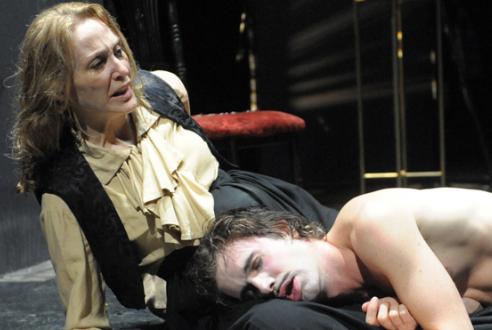
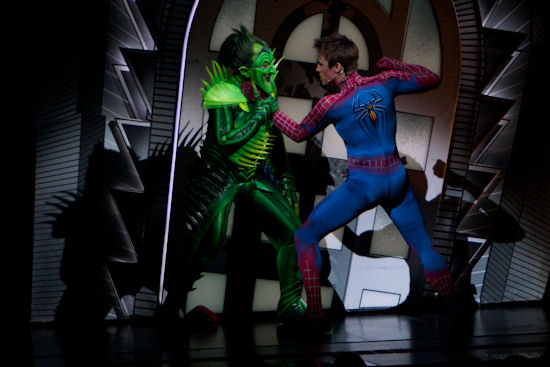
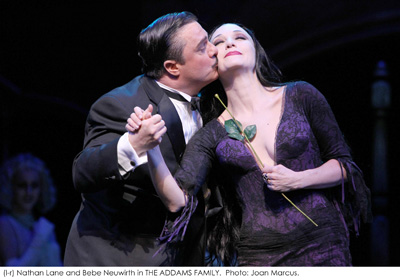 There
There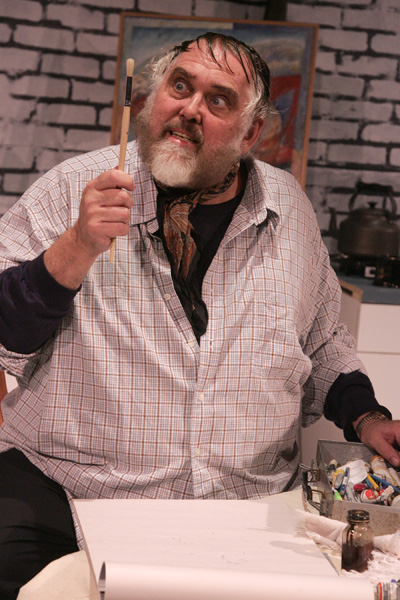 Mostel was
prompted by the teacher to improvise. That fortuitous encounter led to
an extraordinary career—spanning the absurdist play
Rhinoceros to the seminal
Tevye in Fiddler on the Roof
(which earned him a Tony) to film and TV work. While talented, he had a
reputation for dominating any production.
Mostel was
prompted by the teacher to improvise. That fortuitous encounter led to
an extraordinary career—spanning the absurdist play
Rhinoceros to the seminal
Tevye in Fiddler on the Roof
(which earned him a Tony) to film and TV work. While talented, he had a
reputation for dominating any production.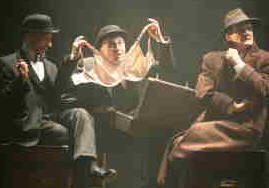 handcuffs,
are vintage Hitchcock. In the Broadway incarnation, direct from the West
End, The 39 Steps is played for laughs, rather than dramatic
highpoints, though it adheres to the original script. In the current
rendition at the American Airlines Theater, the show is a salute to
inspired staging and wonderfully versatile actors.
handcuffs,
are vintage Hitchcock. In the Broadway incarnation, direct from the West
End, The 39 Steps is played for laughs, rather than dramatic
highpoints, though it adheres to the original script. In the current
rendition at the American Airlines Theater, the show is a salute to
inspired staging and wonderfully versatile actors.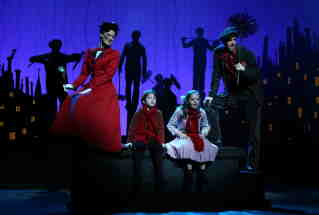 If
you think you know Mary Poppins, think again. Disney made her
famous in the 1964 movie, and children—and adults everywhere—secretly wish
that they, too, could live, for even a few moments, at 17 Cherry Tree
Lane, London—at least, while the indomitable Poppins is in residence.
Mystical and magical, she is, again, happily in our midst.
If
you think you know Mary Poppins, think again. Disney made her
famous in the 1964 movie, and children—and adults everywhere—secretly wish
that they, too, could live, for even a few moments, at 17 Cherry Tree
Lane, London—at least, while the indomitable Poppins is in residence.
Mystical and magical, she is, again, happily in our midst. 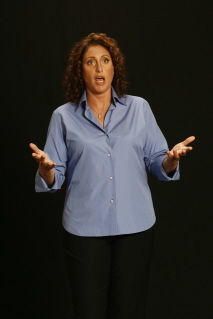 I
laughed. I cried. I thought Judy Gold, a stand-up comic who won two Emmys
for writing for The Rosie O’Donnell Show, had something to say. The big
surprise was that the comic who hosts HBO’s At the Multiplex With Judy
Gold is also a talented actress.
I
laughed. I cried. I thought Judy Gold, a stand-up comic who won two Emmys
for writing for The Rosie O’Donnell Show, had something to say. The big
surprise was that the comic who hosts HBO’s At the Multiplex With Judy
Gold is also a talented actress.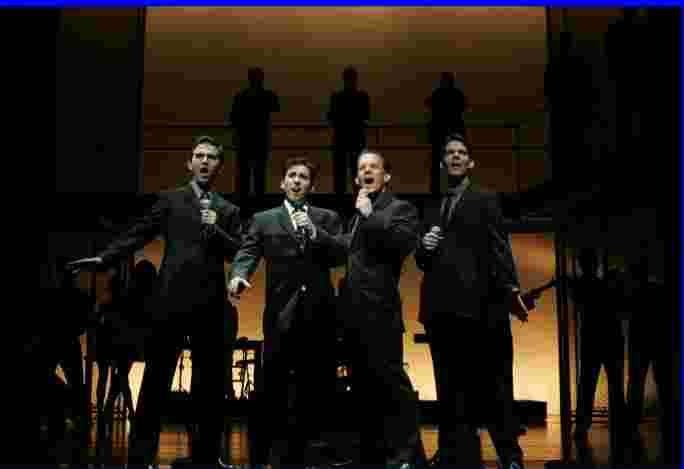 It’s
a long journey from singing on the mean streets of New Jersey to the
Rock ’N’ Roll Hall of Fame, but Frankie Valli and the Four Seasons did
it. One of the most successful vocal groups of the 1960s, The Four
Seasons scored a series of smash hit singles between 1962 and 1967,
featuring the piercing falsetto voice of Frankie Valli). But the boys
weren’t a one-note wonder. During their 40-year career, the group sold
more than 100 million records. (Thanks to Bob Gaudio, one of the quartet
and the songwriting genius behind their success.) Now playing at the
August Wilson Theatre, “Jersey Boys” chronicles their story—and this
super-entertaining musical roller coaster doesn’t miss a beat.
It’s
a long journey from singing on the mean streets of New Jersey to the
Rock ’N’ Roll Hall of Fame, but Frankie Valli and the Four Seasons did
it. One of the most successful vocal groups of the 1960s, The Four
Seasons scored a series of smash hit singles between 1962 and 1967,
featuring the piercing falsetto voice of Frankie Valli). But the boys
weren’t a one-note wonder. During their 40-year career, the group sold
more than 100 million records. (Thanks to Bob Gaudio, one of the quartet
and the songwriting genius behind their success.) Now playing at the
August Wilson Theatre, “Jersey Boys” chronicles their story—and this
super-entertaining musical roller coaster doesn’t miss a beat. 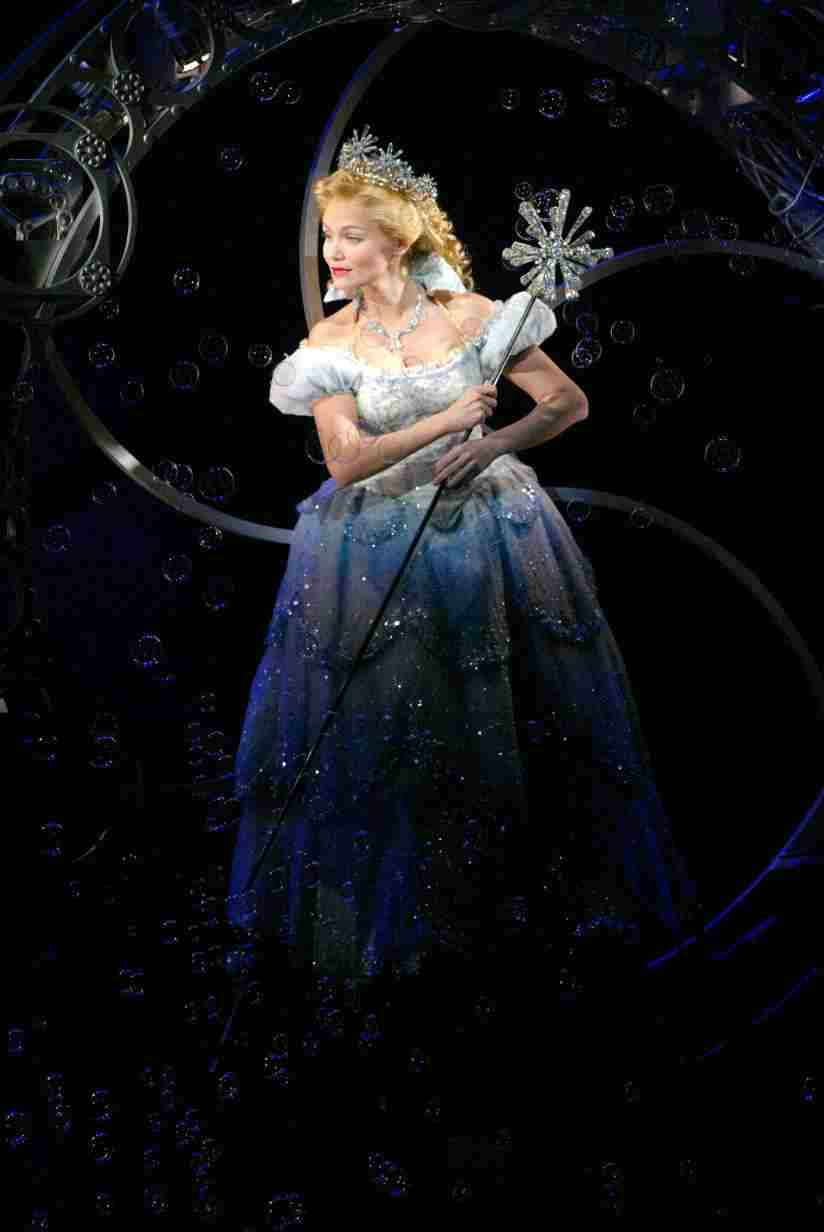 "Wicked"
is wicked cool. It is one of those big, bold Broadway shows that wraps a
provocative theme inside a visual treat. "Wicked," now playing
at the Gershwin Theatre, is a prequel to "The Wizard of Oz."
Inhabited by wizards and talking goats and magical spells, we’re not
in Kansas anymore. Ironically, Kansas is still with us. The conceit of
"Wicked" is that the fantasy world resembles our own - it’s
filled with love and kindness, as well as jealousy, oppression and
deceit. They just have better costumes.
"Wicked"
is wicked cool. It is one of those big, bold Broadway shows that wraps a
provocative theme inside a visual treat. "Wicked," now playing
at the Gershwin Theatre, is a prequel to "The Wizard of Oz."
Inhabited by wizards and talking goats and magical spells, we’re not
in Kansas anymore. Ironically, Kansas is still with us. The conceit of
"Wicked" is that the fantasy world resembles our own - it’s
filled with love and kindness, as well as jealousy, oppression and
deceit. They just have better costumes.  - 219 W. 49 St.
- 219 W. 49 St.